FAQs for Upgraded Users with Disaster Recovery
What is the difference between a test failover and a live recovery?
A test failover serves two purposes:
To verify that the add-on product has been fully provisioned in your environment
To meet compliance requirements
Additionally, a test failover does not affect your production environment.
A live recovery serves to keep your applications available during an environment outage. You should only request a live recovery if you are unable to work through the expected environment downtime.
I had Continuous Server Replication (Disaster Recovery) in my Gen 3 (my.armor.com) environment. Do I need to order this add-on product again in my Gen 4 (amp.armor.com) environment?
In short, no. As part of the upgrade process, any virtual machine that was subscribed to Continuous Server Replication (Disaster Recovery) in Gen 3 will retain that service in Gen 4.
For any Gen 3 virtual machine that did not have Continuous Server Replication (Disaster Recovery), or for newly created Gen 4 virtual machines, you must order Continuous Server Replication (Disaster Recovery) in AMP.
To learn how to order, see Continuous Server Replication - Disaster Recovery - for Upgraded Users.
How do I order Continuous Server Replication (Disaster Recovery) and request a test failover?
You can order the Continuous Server Replication (Disaster Recovery) add-on product in the Armor Management Portal (AMP). Once this add-on product has been fully provisioned, you can submit a support ticket to request a test failover. Armor Support will coordinate with you to establish expectations and timelines.
To learn how to order Continuous Server Replication (Disaster Recovery), as well as request a test failover, see Continuous Server Replication - Disaster Recovery - for Upgraded Users.
If my primary environment is experiencing an outage, does Armor automatically perform a live recovery?
Armor will never perform a live recovery without an authorized user's request.
Although Armor will notify you about an environment outage, you are still responsible for communicating a live recovery request to Armor.
Similarly, while Armor will notify you about the end of an environment outage, you must contact Armor to request a restoration to your primary environment.
To learn how to send a support ticket, see Armor Support.
Who can request a live recovery?
Armor Support will only perform a live recovery when an authorized user has made the request to Armor.
As a result, when you order Continuous Server Replication (Disaster Recovery), Armor Support will ask via a support ticket the names of your authorized users. In the future, only these users can submit a support ticket to request a live recovery.
If I make a change in my live recovery environment, will that change be reflected in my primary environment after a restoration?
Any change that you make in the Armor Management Portal (AMP) will not be reflected in the primary environment after a live recovery and restoration. For example, any change to your firewall rules will not be replicated in the primary environment.
However, any change in the backend (outside of AMP) will be replicated, such as a change to your database.
How do I end the live recovery process and restore to my primary environment?
You must send a support ticket and indicate your interest to restore to your primary environment.
To learn how to send a support ticket, see Armor Support.
During a live recovery and restoration, how are the primary and live recovery virtual machines displayed in AMP?
Live Recovery
In a live recovery, only the live recovery virtual machine will be displayed in AMP, with the exception of the Log Management screen.
Both the primary virtual machine and the live recovery virtual machine will be displayed in the Log Management screen.
The live recovery virtual machine will contain the same name as the primary virtual machine, along with a yellow icon.
Live Restoration
In a live restoration, only the primary virtual machine will be displayed in AMP, with the exception of the Log Management.
Both the primary virtual machine and the live recovery virtual machine will be displayed in the Log Management screen.
During a test failover, how are the primary and test failover virtual machines displayed in AMP?
In a test failover, both the primary virtual machine and the test failover virtual machine will be displayed.
The name of the test failover virtual machine will be the same name as the primary virtual machine, along with a - Test.
For example, if the name of your primary virtual machine is My Company, then the name of the test failover virtual machine will be My Company - Test.
After a test failover, the test failover virtual machine will be removed from AMP.
How do I access a live recovery virtual machine?
Similar to accessing a primary virtual machine, to access a live recovery virtual machine, you must download and install the SSL/VPN client for Gen 4. You must download the client that corresponds to the correct recovery environment:
If your primary environment is DFW01, then you should download the client for the PHX01-Recovery environment.
If your primary environment is PHX01, then you should download the client for the DFW01-Recovery environment.
To access a live recovery virtual machine, you cannot use the Gen 3 (my.armor.com) SSL/VPN client. You can only use the Gen 4 (amp.armor.com) SSL/VPN client.
To learn how to download and install an SSL/VPN client in Gen 4, see SSL VPN.
Will a live recovery and restoration affect my DNS?
A test failover will not affect your DNS; however, a live recovery will affect your DNS.
In a live recovery, your primary environment will be replicated in a live recovery environment, which will change the IP address.
You must update your DNS after the live recovery, as well as after the restoration.
